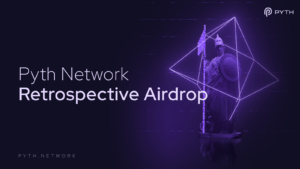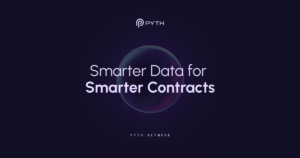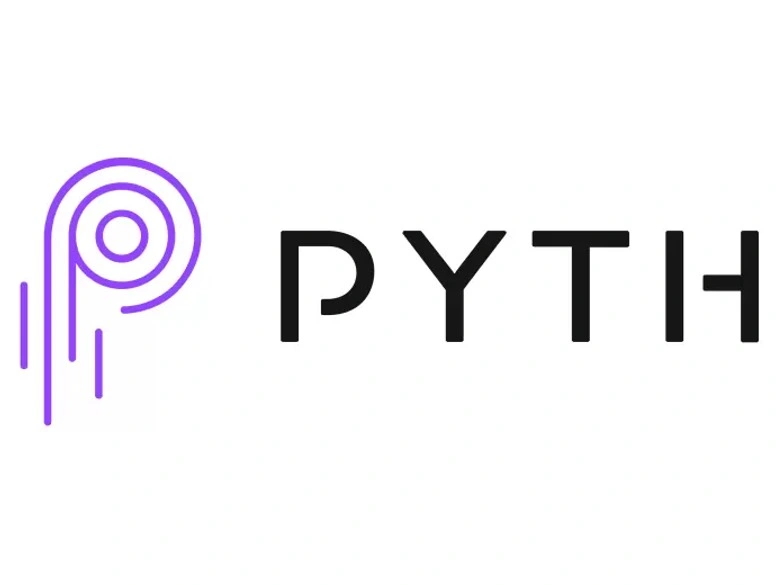Latest News
- Grayscale expands altcoin list to 40 in April 2025 update, adds Dogecoin and PYTH trusts
- Bitcoin Braces For Trump Tariff Announcement: 'Short-Term Optimism' Has The Upper Hand, Experts Say
- Weekly crypto recap: $1.4B Bybit hack, Solana memecoin drama, and Microstrategy's plan to raise $2B
- Three Altcoins Skyrocket in Hours After Going Live on Top US Crypto Exchange Coinbase
Current Price
The current price of PYTH is $0.14485
Introduction
Pyth Network (PYTH) emerges as a significant player in the decentralized finance landscape, offering a unique solution for real-time market data through its innovative oracle system.
By leveraging contributions from institutional traders, the network aims to enhance data accuracy and transparency, which are critical for the reliability of DeFi applications.
However, as the ecosystem evolves, several challenges such as competition and scalability may impact its trajectory.
Understanding how Pyth addresses these issues will provide insight into its potential long-term viability and influence in the crypto space.
Quick Overview
- Pyth Network is a decentralized oracle solution that delivers real-time market data, enhancing accessibility and accuracy for blockchain applications.
- It aggregates data from institutional traders and exchanges, ensuring reliable and low-latency information for decentralized finance (DeFi) platforms.
- The network’s cross-chain compatibility supports diverse assets, promoting interoperability and reducing liquidity fragmentation in the DeFi ecosystem.
- PYTH tokens incentivize data providers for accurate contributions, playing a crucial role in governance and network engagement.
- Future growth depends on innovation, compliance with regulations, and expanding the user base to maintain competitive relevance in the oracle market.

Overview of Pyth Network
The Pyth Network is an innovative decentralized oracle solution designed to deliver real-time market data to various blockchain ecosystems. By bridging the gap between off-chain data sources and on-chain applications, the Pyth Network provides critical financial information, including asset prices, trading volumes, and market trends, thereby enhancing the functionality and reliability of decentralized applications (dApps).
Pyth operates through a network of data providers, primarily institutional traders and exchanges, who contribute high-quality price feeds directly to the blockchain. This model guarantees that the data is not only timely but also accurate and resistant to manipulation.
By utilizing a decentralized framework, Pyth mitigates the risks associated with single points of failure often found in traditional oracle solutions.
Moreover, the Pyth Network employs a unique aggregation mechanism that consolidates data feeds to maintain consistency and reliability. This approach enables the network to offer a diverse range of financial data across multiple asset classes, including cryptocurrencies, equities, and commodities.
As the demand for real-time data continues to escalate in the DeFi landscape, Pyth Network positions itself as a pivotal player, facilitating advanced financial applications with robust, real-time insights.
Key Features of PYTH
The Pyth Network (PYTH) offers critical features that enhance its functionality in the blockchain ecosystem.
Its real-time data aggregation guarantees that users receive timely and accurate market information, which is essential for informed decision-making.
In addition, the decentralized oracle network eliminates single points of failure, enhancing data integrity and reliability across various applications.
Real-time Data Aggregation
A critical aspect of the Pyth Network (PYTH) is its ability to provide real-time data aggregation, which greatly enhances the accuracy and reliability of price feeds in decentralized finance (DeFi). This capability is essential in a market environment characterized by rapid price fluctuations and high volatility. By sourcing data from multiple trusted providers, Pyth guarantees that its price feeds reflect the most current market conditions, thereby reducing the latency often associated with traditional data aggregation methods.
The network utilizes a unique mechanism that combines on-chain and off-chain data, allowing it to capture a wide array of market information in real-time. This hybrid approach not only improves the responsiveness of price feeds but also mitigates the risks of data manipulation and discrepancies across platforms.
Additionally, Pyth’s model enables cross-asset price feeds, facilitating a more interconnected financial ecosystem.
With a focus on transparency and decentralization, Pyth’s data aggregation process is designed to deliver high-quality, verifiable price information. This not only empowers DeFi applications but also builds trust among users, fostering a more robust and resilient decentralized financial infrastructure.
Decentralized Oracle Network
Frequently, decentralized oracle networks serve as the backbone of reliable data delivery in blockchain ecosystems, and Pyth Network exemplifies this with its robust infrastructure. By harnessing a unique combination of on-chain and off-chain data sources, Pyth guarantees that its oracle solutions maintain high accuracy and low latency. This is achieved through a network of trusted data providers who contribute real-time information, particularly in the financial sector, where timely data is vital for trading and risk management.
A key feature of Pyth Network is its focus on transparency. The data submitted by providers is publicly verifiable, allowing users to assess the reliability of the information they receive. Additionally, the decentralized nature of the network mitigates the risks associated with single points of failure, enhancing security and resilience.
Furthermore, Pyth’s innovative approach to incentives guarantees that data providers are rewarded for their contributions, fostering a vibrant ecosystem of high-quality data feeds. This model not only enhances the overall robustness of the oracle network but also positions Pyth as a leader in the decentralized finance (DeFi) space, where accurate data is paramount for informed decision-making.
How Pyth Network Works
Pyth Network’s architecture leverages a decentralized model to aggregate and disseminate real-time market data efficiently. Utilizing a network of trusted data providers, Pyth collects pricing information from various sources, including exchanges and trading platforms. This data is then validated and published on-chain, guaranteeing that it is both timely and accurate.
The network employs a unique consensus mechanism that allows for the aggregation of price feeds from multiple contributors. This collaborative approach enhances data reliability, as discrepancies can be identified and addressed promptly.
Pyth also utilizes cryptographic techniques to guarantee the integrity of the data being transmitted, safeguarding against potential attacks or manipulation.
Data feeds are published in a format that is compatible with various blockchain ecosystems, facilitating seamless integration across decentralized applications (dApps). This interoperability is vital for expanding the usability of the data provided by Pyth, making it accessible for a wide array of financial instruments and services.
Use Cases and Applications
Pyth Network serves as a decentralized data oracle, providing reliable and timely price feeds essential for various decentralized finance (DeFi) applications.
Its cross-chain compatibility features enhance the utility of these price feeds, facilitating seamless data integration across multiple blockchain ecosystems.
This versatility positions Pyth Network as a pivotal player in the evolving landscape of decentralized data solutions.
Decentralized Data Oracles
In the rapidly evolving landscape of blockchain technology, decentralized data oracles have emerged as a critical bridge between on-chain and off-chain data, enabling smart contracts to interact with real-world information.
By facilitating this linkage, decentralized data oracles play a pivotal role in enhancing the functionality and reliability of blockchain applications.
Key use cases and applications of decentralized data oracles include:
- Financial Data Aggregation: They provide accurate and timely financial data, such as asset prices, which are essential for DeFi applications and trading platforms.
- Supply Chain Management: Decentralized oracles can track real-time supply chain metrics, ensuring transparency and accountability at every stage, thereby mitigating fraud and inefficiencies.
- Insurance Verification: They can automate insurance claims by providing verifiable external data, such as weather conditions, allowing for faster processing and reduced operational costs.
The integration of decentralized data oracles not only enhances the utility of blockchain technology but also fosters greater trust among users by providing reliable data sources that are less susceptible to manipulation.
As the ecosystem matures, these oracles will be instrumental in driving the next wave of innovation in decentralized applications.
Price Feeds in DeFi
A robust and reliable price feed is essential for the functionality of decentralized finance (DeFi) applications, as it directly influences trading strategies, liquidity provisioning, and risk management.
In DeFi, price feeds aggregate data from multiple sources to provide real-time price information for various assets, including cryptocurrencies, fiat currencies, and commodities. This data is critical for platforms that facilitate automated trading, lending, and borrowing.
Applications such as decentralized exchanges (DEXs) rely on accurate price feeds to guarantee fair pricing and mitigate the risk of arbitrage opportunities. Similarly, lending platforms utilize price feeds to determine collateral values, thereby safeguarding against liquidation risks.
Price volatility presents a challenge; consequently, reliable feeds must be resilient to manipulation and downtime.
Furthermore, derivatives and synthetic asset platforms depend on precise price feeds to maintain parity with underlying assets. The integrity of these feeds is paramount, as inaccuracies can lead to significant financial losses for users.
As a result, employing decentralized oracle solutions like the Pyth Network enhances trust and transparency, ultimately fostering a more stable DeFi ecosystem. By guaranteeing high-quality price feeds, DeFi applications can achieve greater efficiency and user confidence.

Cross-Chain Compatibility Features
Cross-chain compatibility features represent a critical advancement in the blockchain ecosystem, enabling seamless interaction between disparate networks. The Pyth Network (PYTH) exemplifies this capability, facilitating a range of use cases that enhance both efficiency and functionality in decentralized finance (DeFi) and beyond.
By aggregating and delivering real-time price feeds across various blockchains, PYTH addresses the challenges of liquidity fragmentation and data silos.
The following applications highlight the importance of cross-chain compatibility:
- Interoperable DeFi Protocols: PYTH enables DeFi applications to access accurate and timely price data from multiple blockchains, enhancing their ability to offer diverse financial products, such as yield farming and lending.
- Enhanced Liquidity: By providing reliable price feeds across chains, PYTH allows liquidity providers to optimize their strategies, ultimately improving market efficiency and reducing arbitrage opportunities.
- Cross-Chain Asset Management: Investors can utilize PYTH’s price feeds to manage assets across different blockchains, making informed decisions while minimizing risks associated with data inconsistencies.
The Role of PYTH Token
Central to the functionality of the Pyth Network, the PYTH token plays a pivotal role in facilitating data sharing and incentivizing participation within the ecosystem. As a utility token, PYTH is integral to the governance and operational aspects of the network, enabling users to stake tokens and participate in decision-making processes. This governance structure guarantees that the network evolves in alignment with stakeholder interests, fostering a decentralized and transparent environment.
Moreover, the PYTH token serves as a medium of exchange for data providers and consumers. Data contributors are rewarded with PYTH tokens for delivering accurate and timely information, thereby enhancing the quality and reliability of the data available on the network. This incentivization model not only bolsters the integrity of the data but also encourages a broader range of participants.
In addition, the token’s economic model is designed to balance supply and demand, aiming to stabilize its value over time. As the Pyth Network expands its reach and utility, the PYTH token is expected to play an increasingly significant role in driving engagement and fostering a sustainable ecosystem that benefits all stakeholders involved.

Future Prospects and Challenges
As the Pyth Network continues to evolve, it faces a landscape filled with both promising opportunities and significant challenges. The network’s innovative approach to providing real-time data feeds positions it well within the rapidly growing decentralized finance (DeFi) ecosystem.
However, several factors will influence its future trajectory.
- Market Competition: The rise of alternative oracle solutions may challenge Pyth’s market share, necessitating continuous innovation and differentiation to maintain its competitive edge.
- Regulatory Landscape: As governments around the world tighten regulations on cryptocurrencies and blockchain technologies, Pyth must navigate these complexities to guarantee compliance while fostering growth.
- Scalability and Network Effects: The expansion of its user base and data providers is vital. Pyth needs to enhance its infrastructure to handle increased demand and assure low latency, which is essential for real-time data delivery.
Frequently Asked Questions
What Are the Main Competitors of Pyth Network?
The main competitors in the decentralized data oracle space include Chainlink, Band Protocol, and Tellor. These platforms provide reliable price feeds and data solutions, each with distinct mechanisms and strengths that cater to various market needs.
How Does Pyth Network Ensure Data Accuracy?
To guarantee data accuracy, decentralized networks typically implement consensus mechanisms, utilize multiple data sources, and apply rigorous validation processes. These strategies enhance reliability and foster trust among users, combating misinformation in real-time data dissemination.
What Partnerships Has Pyth Network Established?
Partnerships in decentralized networks are essential for data integration and validation. Collaborations with financial institutions, data providers, and blockchain platforms enhance credibility, ensuring a robust ecosystem that can reliably deliver accurate, real-time information to users.
Is Pyth Network Compatible With Other Blockchains?
Interoperability among blockchain networks is vital for maximizing utility. Various projects employ cross-chain compatibility mechanisms, enabling seamless data exchange. Evaluating specific protocols and integration strategies is essential to determine overall effectiveness and compatibility across different blockchains.
How Can I Participate in Pyth Network Governance?
To participate in governance, stakeholders typically must hold governance tokens, engage in voting processes, and contribute to discussions within the community. Active involvement in forums and proposals enhances influence over decision-making and strategic direction.
Wrapping Up
To summarize, Pyth Network exemplifies a robust decentralized oracle solution, effectively bridging off-chain data with on-chain applications.
Its innovative incentive model and contributions from institutional traders enhance data accuracy and reliability, essential for the decentralized finance ecosystem.
However, challenges such as competition and scalability must be addressed to maintain relevance in the rapidly evolving crypto landscape.
Overall, Pyth Network’s strategic positioning and commitment to transparency suggest a promising future within the decentralized data infrastructure sector.

